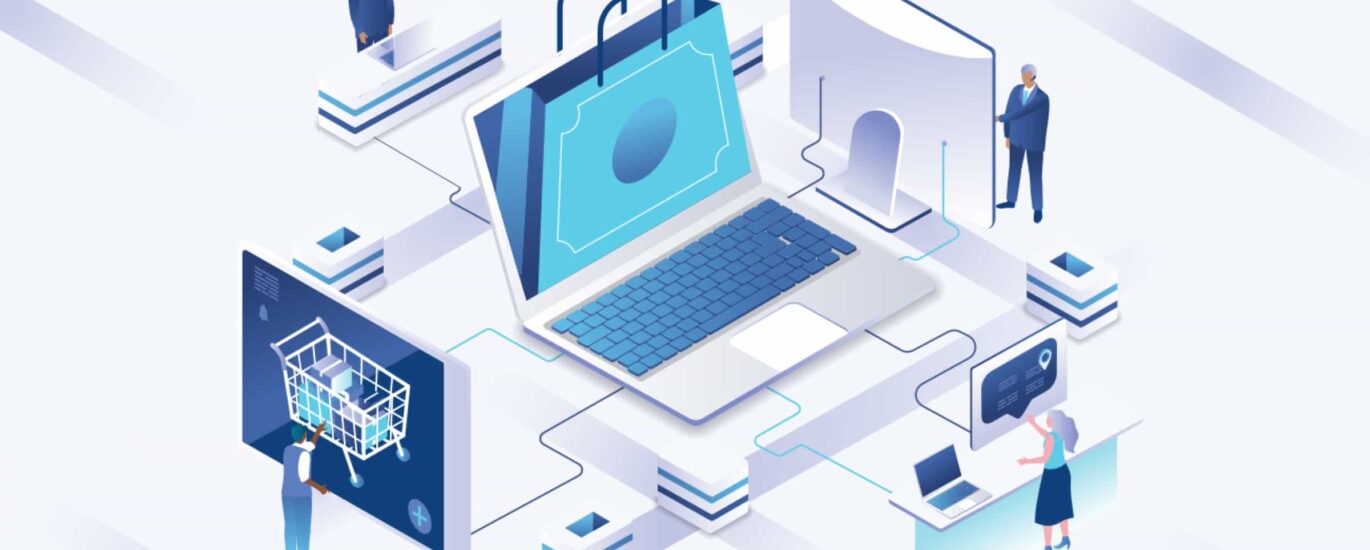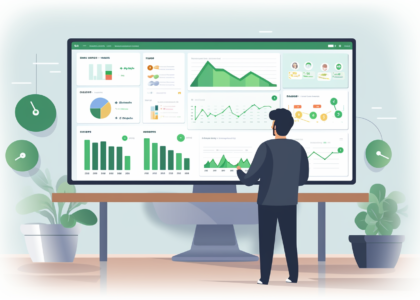Assembling an e-commerce application necessitates carefully cherry-picking the appropriate amalgamation of coding languages, frameworks, libraries, and supplementary implements referred to as the technology stack. This technology stack energizes the complete application, spanning the backend server across the frontend user interface. Opting for the exemplary tech stack remains pivotal when constructing a high-efficiency, extendable, cost-effective e-commerce application. The following manuscript shall escort you via the key elements to mull over upon selecting the technologies for your e-commerce application advancement.
Understanding E-commerce Application Specifications
The preliminary stride involves procuring a transparent discernment of what you aspire to accomplish alongside your e-commerce application. This encompasses:
- The classifications of goods/services you scheme to vend
- The principal application capabilities plus functions
- The target demographic and quantity of expected end-users
- Peak traffic volumes plus order processing prerequisites
- Security, compliance, and fraud prevention stipulations
- The maturation timeline and financial plan
Dissecting these specifications shall define the intricacy of your e-commerce application plus the technical proficiencies necessitated. A multifaceted application alongside diverse capabilities shall require a robust tech stack. At the same time, a simple MVP could be fabricated with fewer technologies.
Evaluating Maturation expenditures
The overheads of constructing plus sustaining an e-commerce application as time elapses hinge on the underlying technology stack. Various influences upon cost include:
- The educational curve of sundry technologies
- Accessibility of developers well-versed in those technologies
- Hosting, licensing, plus tooling expenditures
- The complexity of merging miscellaneous technologies
- Recurrence plus effort essential for modernization/maintenance
Unrestricted tech stacks like MERN frequently possess subordinate licensing overheads versus proprietary stacks such as .NET. However, the accessibility of .NET developers could remain higher within several regions, balancing long-term expenses.
Appraising Performance Stipulations
E-commerce applications must furnish rapid, reliable presentations to meet user demands. The tech stack impacts:
- Page load velocities – Swifter runtimes plus caching refine this.
- Scalability – Could the stack regulate traffic spikes for flash auctions, etc.?
- Uptime plus reliability – The stack must minimize downtime.
- Payment processing – Securely regulate lofty quantities of transactions.
JavaScript-founded stacks akin to MERN excel at dispensing dynamic content swiftly. Ruby on Rails endows robust backing for intricate database-driven applications. Evaluating the presentation of miscellaneous piles remains commended.
Mulling over Security Requests
Security remains decisive for an e-commerce application manoeuvring delicate end-user plus disbursement information. The tech stack must possess sturdy capabilities for:
- User authentication plus authorization – Safely identify end-users plus steer access.
- Encrypting information – Shield entire confidential plus economic information.
- Thwarting assaults – Implements akin to input validation plus SQL injection obstruction remain indispensable.
- Compliance – The stack must adhere to benchmarks akin to PCI DSS for disbursement processing applications.
Python/Django possesses abundant mature security libraries, while Node.js reinforces sturdy end-user authentication innately. Attentively reassess the security capabilities before finalizing the stack.
Opting for the Paramount Tech Stack Amalgamation
Alongside a transparent discernment of the objectives, intricacy, presentation, plus security requests, you could now evaluate technology stacks such as:
- LAMP (Linux, Apache, MySQL, PHP) – Unrestricted stack alongside established scalability plus developer accessibility.
- MEAN (MongoDB, Express.js, Angular, Node.js) – Efficient for real-time applications alongside JSON information stipulations.
- MERN (MongoDB, Express.js, React, Node.js) – Contemporary JavaScript-founded stack exemplary for UX-focused applications.
- Ruby on Rails – Endows convention over configuration for swift maturation.
- Django (Python) – Incorporated web framework ideal for intricate databases.
Dissect the advantages plus downsides of every stack founded on your application stipulations. For instance, MEAN/MERN accommodate applications requiring real-time end-user experiences. Django remains exemplary for sales-reporting dashboards extrapolating information from miscellaneous origins.
Majority ventures shall necessitate an amalgamation of technologies – such as utilizing React for the frontend UI alongside Python/Flask on the backend. Attentively mull over how adeptly every module coalesces, plus whether the stack endows end-to-end backing.
Subsequent Paramount Exercises
Upon finalizing the technology stack, subsequent paramount exercises during maturation remain counselled:
- Abide by secure encoding guidelines plus assimilate sturdy authentication, encryption, plus validation.
- Construct alongside presentation plus scalability within the psyche from the onset, optimizing queries plus harnessing caching.
- Extensively experiment across miscellaneous exploit cases plus payloads to apprehend issues.
- Monitor application presentation post-launch to rectify bottlenecks.
- Evaluate contemporary renditions plus migrate upon beneficial to leverage refinements.
Refrain from over-engineering initially – inaugurate alongside the most straightforward viable stack, then evolve it to congregate emerging requirements. Alongside the accurate technology stack energizing your application, you could focus on forging an exceptional end-user experience.
Conclusion
Selecting the accurate technology stack institutes the base for constructing a feature-packed e-commerce application that delights patrons. Attentively dissect your stipulations, gauge the trade-offs of miscellaneous piles, plus opt for technologies that coalesce effortlessly. Partnering alongside a seasoned maturation team could additionally escort you in forging a sturdy, extendable, plus secure application enhanced to fulfil your e-commerce vision.
FAQ
Q: How should I decide between unrestricted plus proprietary technology stacks?
A: Evaluate complete expenditure, security, backing accessibility, scalability stipulations, plus developer proficiency to define whether unrestricted or proprietary stacks superior accommodate your application plus enterprise.
Q: Should I construct a monolithic or microservices-founded architecture?
A: Monolithic applications situate everything into a solitary codebase, simplifying maturation initially. Microservices dissever the application into autonomous elements, augmenting intricacy while refining scalability.
Q: How frequently should the technology stack remain modernized?
A: Counterbalance the advantages of contemporary capabilities/refinements alongside the occasion essential to upgrade. Annual reassessments assist in defining whether upgrades remain worthwhile founded on your roadmap.
Q: Does the tech stack influence SEO plus end-user experience?
A: Affirmative page load velocities, caching, plus supplementary technical influences impacted by the stack affect both SEO plus UX. Evaluate how every accumulation enhances these.
Q: How should I estimate expenditures for an e-commerce application stack?
A: Mull over developer expenditures, licensing fees, cloud hosting charges, CDN usage, maintenance stipulations, plus supplementary outlays for the complete stack upon estimating financial plans.
Q: Could I effortlessly switch technologies within the stack later?
A: Several modules akin to frontend frameworks could remain substituted more readily than backend database or infrastructure layers. A modular blueprint endows further flexibility.
Q: How should I guarantee disbursement security alongside the technology stack?
A: Harness stacks alongside sturdy innate backing for congregating PCI compliance, SSL encryption, tokenization, fraud dissection implements, plus supplementary security capabilities.




